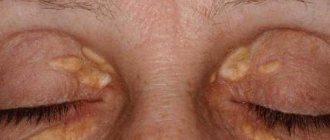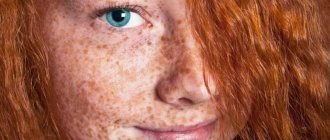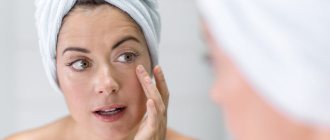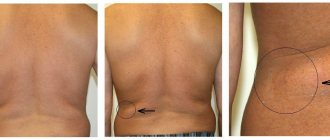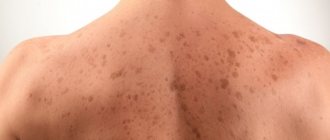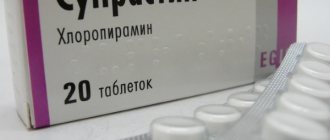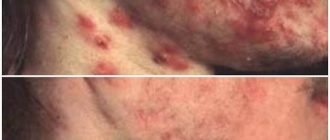Yellow skin color is a common phenomenon that can result from many factors. Such pigmentation in an adult does not always have negative consequences, as it can appear due to the food consumed. However, yellowed skin can indicate diseases of the liver, blood and gall bladder, which entails serious consequences for the body.
For this reason, it is necessary to carefully monitor your health and promptly seek help from a doctor.
Causes of yellow skin
Yellow skin color in an adult may indicate the presence of both serious pathologies and digestive problems. Bilirubin, which is a breakdown product of hemoglobin, is responsible for the yellow color of the epidermis. The latter, in turn, transports oxygen in the body.
The pigment bilirubin is formed in the liver as a result of the decomposition of red blood cells. In some cases, an increase in pigment content leads to blockage of blood vessels and bile ducts, liver pathologies, and the formation of gallstones. In addition to yellowing of the skin, increased bilirubin gives a yellow tint to the sclera of the eyes and the surface of the tongue.
Yellow facial skin is observed when the cardiovascular system and lipid metabolism are disrupted. Another cause of pathology is a sudden change in diet, problems with metabolism and high cholesterol in the blood. Yellowing of the skin can be a reaction of the body to vegetable salads, juices or fresh juices with a high content of carrots, pumpkin, orange or tangerine.
Excessive intake of various spices
Excessive intake of various spices, fatty and spicy foods can provoke stagnation of bile, which subsequently affects the condition of the skin. Unhealthy skin tone appears as a result of an unbalanced diet, after prolonged fasting, alcohol and drug abuse.
In addition to the above reasons, pathology can be caused by:
- serious physical activity;
- stressful situations, depression and emotional shock;
- prolonged insomnia;
- pathologies of the digestive tract;
- hormonal imbalances;
- the body's reaction to exposure to the sun.
Among the serious disorders are malfunctions of the endocrine system, as a result of which the thyroid gland suffers. The environmental situation in the place where a person lives also affects the appearance and condition of the skin. The presence of a large number of enterprises in the city and work in such places over time can lead to disorders of various organs of the human body.
Yellow skin color in a child. If skin color changes: jaundice
In some situations, the skin of children develops various shades of yellowness, which may indicate the presence of jaundice. The color can vary from green-yellow, close to olive, to yellowish-orange and almost orange. However, the yellow color of the skin does not always indicate pathological jaundice. Babies who are actively fed pumpkin, carrots and some other foods may develop a special physiological condition - carotene jaundice. This is an excessive accumulation of pigment from these fruits in the thickness of the skin. By reducing the consumption of these products (or canceling them), the change in skin color quickly disappears, while the children are completely healthy and feel well. Staining usually affects the nose, palms and feet, the skin does not have pathological elements or itching, this condition does not pose any danger to life or health and does not require medical correction.
At the same time, yellow skin tones may indicate liver problems and the development of various types of hepatitis or other disorders. Children may suffer from hemolytic anemia, in which red blood cells inside blood vessels and tissues are intensively destroyed. As a result, parents note lemon yellowness. If jaundice is caused by problems with the flow of bile due to mechanical obstructions (spasm of the ducts, stones, parasites), the skin takes on an olive tint or a greenish-yellow color.
If the liver is affected by infections, suffers from toxins, or inflammation of the liver cells of another origin occurs, with jaundice the skin has a yellowish-orange color. In addition, children also have staining of the white membrane of the eyes, mucous membranes in the mouth, there are numerous symptoms from the internal organs and itchy skin. If visible yellowness appears on the skin, and even more so if the whites of the eyes and mouth turn yellow, parents should immediately consult a doctor with their child.
Types of diseases with yellow skin color
Yellow skin color in an adult may appear as a result of the following pathologies:
- Cholecystitis. This disease is characterized by acute inflammation of the gallbladder. As a result, stones are formed that block the gallbladder and the exit of bile.
- Intestinal worm infection. The appearance of roundworms in the human body is associated with poor hygiene and the consumption of unwashed vegetables. The worm often parasitizes the liver, which causes unhealthy skin color along with other problems.
- Hemostatic spherocytosis is a pathology that destroys and deforms red blood cells. As a result, a person has yellowish skin and sclera of the eyes, as well as an enlarged spleen.
- Gallstones. They are solid deposits that vary in size, shape and composition.
Gallstones - Sickle anemia is a hereditary pathology that leads to the formation of an abnormal form of hemoglobin protein. Due to excessive breakdown of hemoglobin, patients often experience jaundice.
- Mononucleosis is a disease caused by a virus. It often manifests itself in the form of fever, with plaque forming on the tonsils, enlarged lymph nodes, liver and spleen. Yellow skin is one of the manifestations of infection.
- Hepatitis C is an inflammation of the liver caused by a virus that enters the human body through the blood. Experts call the virus a “gentle killer,” since the disease may not manifest itself for a certain time, and the infected person lives quietly, unaware of the presence of pathology in the body.
- One of the main causes of yellow skin is liver disease. Among them are: cirrhosis, hepatitis, Gilbert's syndrome. They all have different reasons for their appearance and the nature of their course. However, what unites a group of diseases is the destruction of the main human organ.
Yellow color of the skin and whites of the eyes. Do yellow whites mean illness? Causes of yellowing eyes
Yellow whites around the eyes usually indicate increased bilirubin in the blood. This condition can be caused by diseases of the liver and bile ducts or by taking certain medications. This is also the first sign of jaundice. The appearance of yellowed eyes is an indication for a medical visit and laboratory tests.
Bilirubin is a yellow pigment that is a breakdown product of hemoglobin, heme and other hemoproteins found in red blood cells. It is first detected in the plasma, then enters the liver and gallbladder. By checking blood levels, the health and functioning of the liver can be assessed. Its increased concentration may appear in the form of yellow eye whites. This is caused by diseases of the liver and biliary tract, poisoning and taking certain medications.
What do yellow whites indicate?
Yellow eyes are a symptom of increased levels of bilirubin in the blood, which accumulates in the tissues and changes color. This is caused by excessive pigment production or improper secretion and metabolism in the liver. The general bilirubin norm for an adult is 0.2-1.1 mg/dl. Yellow colored proteins appear when levels exceed 2 mg/dL. In addition to changes in the color of the eyeball, symptoms of jaundice also include yellowing of the skin, itching and malaise.
Gilbert's syndrome is also a cause of yellow eyes and jaundice. This is a small congenital disease that is characterized by excessive accumulation of bilirubin in the blood. The disease can continue for many years without further illness and may be diagnosed incidentally during routine blood tests. The main symptom of Gilbert's syndrome is yellowing of the whites and skin around the eyes.
Yellow eyes and abdominal pain are a sign of liver disease that interferes with the metabolism of bilirubin, which leads to its accumulation in body tissues and the appearance of characteristic symptoms. The most common conditions that cause jaundice include:
cirrhosis of the liver,
hepatitis A, B, C,
liver damage caused by toxic substances (drugs, mushrooms, alcohol),
liver cancer,
genetically determined metabolic disorders (for example, Wilson's disease).
Slightly yellow whites of the eyes and skin also appear with jaundice caused by diseases of the bile ducts: gall bladders, pancreatitis and pancreatic tumors. The diseases lead to cholestasis, professionally defined as cholestasis.
Yellow protein after alcohol
An alcoholic's yellow eyes indicate that the liver has been damaged by substances in alcoholic drinks. As a result of the decomposition of ethanol, aldehyde and acetic acid are formed, which have a destructive effect on hepatocytes (liver cells). Depending on the frequency, timing and amount of alcohol consumed, you may end up with:
alcoholic fatty liver disease,
alcoholic hepatitis,
alcoholic cirrhosis of the liver.
Symptoms of alcoholic liver damage include yellowing of the eyes, abdominal pain, epigastric discomfort, liver enlargement, fever, swelling of the lower extremities, ascites, esophageal varices and hepatic encephalopathy or a combination of neurological and psychiatric symptoms associated with effects on nervous tissue toxic substances that do not detoxify in a diseased liver.
Yellow squirrels in a newborn
The most common cause of yellow eyes in a newborn is physiological jaundice. This is a minor symptom caused by an increase in bilirubin in the child's blood due to enzymatic immaturity of the liver (less ability of hepatocytes to take up bilirubin). Physiological jaundice appears on the 2nd day of life and lasts about 10 days. It occurs in almost 40% of newborns. First, there is a change in the color of the skin of the face and the whites of the yellow eye. Then yellowing of the torso, lower limbs and hands.
Yellow whites of a newborn's eyes may also be a sign of pathological jaundice. It is recognized when it appears already on the first day of life or its duration exceeds 14 days. The cause of the disease is:
hemolytic disease,
thalassemia,
metabolic diseases,
hepatitis,
cholangitis.
How to treat yellow squirrels?
If you experience yellowing of the eyes, you should contact your GP for blood tests (morphology, total bilirubin, liver enzymes, antibody tests for viral diseases). The doctor will also usually order an abdominal ultrasound or computed tomography scan. In justified cases, it may be necessary to perform a liver biopsy, which involves removing tissue from the organ and evaluating it under a microscope. Treatment of yellow eye proteins includes therapy for the underlying disease. In the case of physiological jaundice in a newborn, phototherapy can be used - irradiation of the body with special lamps that reduce the level of bilirubin.
Stages and degrees of diseases with yellow skin color
Depending on the cause of the disruption of bilirubin, jaundice is divided into 4 types:
- hemolytic (suprahepatic);
- hepatic;
- mechanical;
- carotene
The simplest and most non-dangerous type is carotene jaundice. The reason for its appearance lies in the consumption of foods high in carotene. As a result, a person's feet and palms may turn yellowish. This condition is safe and the symptoms go away on their own after a few hours.
Symptoms of diseases with yellow skin color
Yellow skin color in an adult is characteristic of various diseases, the symptoms of each of them have their own distinctive features and characteristics:
Symptoms of cholecystitis:
- abdominal pain;
- nausea, vomiting;
- poor appetite;
- diarrhea, constipation;
- heaviness in the right side;
- bitterness in the mouth.
Cholecystitis
Symptoms of intestinal worm:
- abdominal pain;
- nausea, vomiting;
- bloody stools, diarrhea;
- in some cases allergic rash;
- fatigue;
- in advanced stages, roundworms become noticeable in vomit and stool.
Symptoms of hemostatic spherocytosis:
- constant feeling of fatigue;
- abdominal pain;
- fever
Symptoms of gallstone disease:
- loss of appetite;
- nausea;
- sudden weight loss;
- pain in the right side;
- bitterness in the mouth;
- belching.
Symptoms of sickle anemia:
- attacks of pain;
- leg ulcers;
- decreased visual acuity;
- swelling of fingers or toes;
- fatigue.
Sickle anemia
Symptoms of chronic hepatitis C:
- weakness;
- nausea;
- muscle and joint pain;
- poor appetite;
- discomfort in the upper abdomen.
Symptoms of mononucleosis:
- fatigue;
- headache;
- poor appetite;
- abdominal pain;
- increased body temperature;
- a sore throat.
Diagnosis of diseases with yellow skin color
In order to establish the cause of the appearance of yellow skin in an adult, a specialist must conduct a comprehensive examination, which includes:
- taking an anamnesis, during which the doctor studies the patient’s symptoms and complaints;
- a physical diagnosis is carried out, which includes palpation of internal organs and external examination of the patient;
- to study the condition of internal organs, ultrasound or computed tomography is prescribed;
- A biochemical blood test is carried out, as well as a clinical analysis of blood and urine.
CT scan
You can undergo the examination at a clinic at your place of residence.
Diagnostic prices are presented in the table:
| Procedure | price, rub. |
| Bilirubin test | 160-250 |
| General blood analysis | 200-270 |
| Alkaline Phosphotophase Assay | 130-190 |
| ALT analysis | 190-250 |
| Ultrasound of internal organs | 2150-2650 |
| CT scan | 4000-6500 |
When to see a doctor
When yellowing of the skin appears, first of all you need to listen to the general condition of the body. If no symptoms are observed, perhaps the cause lies in poor diet and digestive problems. If skin pigmentation does not subside within several days, a person should consult a therapist.
The doctor will conduct an initial diagnosis, during which a further treatment plan will be prescribed.
When to see a doctor
Depending on the disease, the patient will need the help of doctors of a more narrow specialization:
- gastroenterologist;
- infectious disease specialist;
- hematologist;
- endocrinologist.
Yellow complexion and bruises under the eyes. Additional procedures
An excellent way to combat yellow circles and puffiness are contrast procedures. To implement them you will need lemon juice and a bottle of mineral water. Mix the ingredients and pour the mixture into special molds to freeze.
After this, cleanse your skin and rub an ice cube under your eyes for 30-40 seconds. After this, soak the gauze in warm water and apply it to your eyes. Repeat the contrast procedure 3-4 times.
These are the various ways you can overcome such an unpleasant thing as yellowness under the eyes. The reasons for the manifestation of this disease can be varied, but the most important thing is not to neglect treatment and be sure to take care of your body, then the skin will be healthy and beautiful.
Taking care of your appearance is a paramount necessity today, because people, as they say, are greeted by their clothes. Any little thing can ruin your image and, as a result, the impression you make on others. Yellow circles under the eyes are quite difficult to disguise, but they immediately catch the eye. Probably everyone has encountered such a problem at least once. But few people pay serious attention to this, and in vain. Yellow circles under the eyes, the causes of which are associated with any abnormalities in the body, can be a cause for concern and a trip to the doctor.
Yellow bruises under the eyes can also appear simply due to unfavorable environmental conditions, lack of sleep, poor diet, or taking certain medications. The skin in this area is thin and very susceptible to any influence, both external and internal. If yellow circles appear under the eyes, the reasons for men and women may differ slightly (although most often yellow spots under the eyes have a similar etymology for everyone).
Prevention of diseases with yellow skin color
To prevent diseases, you must adhere to the following rules:
- lead a healthy lifestyle;
- to refuse from bad habits;
- eat healthy food and watch your diet;
- exercise;
- go for walks;
- maintain a daily routine;
- An important point is facial skin care, which consists of using nourishing masks and other cosmetic procedures;
- When the first symptoms appear, you should consult a doctor, as timely treatment helps to quickly overcome the disease and prevent complications.
Yellowed skin - treatment
Under the supervision of a doctor, you can correct yellowed facial skin,
if the diagnosis is serious. And if neither the tests nor the examination reveal any serious abnormalities, then in a simple way you can return the beige color to your face and white to your eyes.
First of all, it is diet. For at least a month you should eat only:
- Dietary white meat
- Protein products: milk, eggs, cheeses, legumes
- Vegetables: cauliflower and white cabbage, cucumbers, zucchini, boiled and raw potatoes, greens
- Fruits: bananas, apples, pears, black plums
- Cereals: semolina, oatmeal, pearl barley
- Drink: water, white and green tea, birch sap, mineral water
Vitamins must be taken separately. Your attending physician will tell you which ones you need.
The second stage is masks for skin whitening. If your skin and eyes turn yellow,
you need to remove the yellow pigment as quickly as possible. On its own, the yellowness will fade in spots, which will further highlight the wrong color.
Methods of treating diseases with yellow skin color
Before prescribing treatment, it is necessary to determine the cause of the pathology. To do this, consultations are carried out with specialists who, during the course of research, prescribe a rehabilitation plan. Often, in addition to taking medications, a diet is necessary that is aimed at normalizing the functioning of internal organs.
Medications
For pathologies caused by viruses, the following drugs are used:
- Ribavirin. Available in the form of tablets and capsules. Do not use during lactation, pregnancy, during recovery after myocardial infarction, or for problems with the thyroid gland. Side effects include: headache, nervousness, high blood pressure. Take 1 tablet 2 times a day. The duration of treatment is at least 4 months. Price from 94 rub.
- Sofosbuvir. It is used to treat hepatitis C in combination with other drugs. Available in tablet form. Take 1 tablet per day with meals. Duration of treatment is 3 months. The drug is often easily tolerated and has no side effects. It is prohibited for use by pregnant women, as well as during lactation and in the presence of individual intolerance to the components. Price from 4000 rub.
Ribavirin
Possible complications
Incorrect and untimely treatment of pathologies that cause yellow pigmentation of the skin can lead to:
- to rupture of the gallbladder, which is fatal to humans;
- if the body is infected with parasitic worms, intestinal obstruction, acute appendicitis, liver abscess or tissue sepsis may occur;
- gallstones can turn into acute cholecystitis, pancreatitis, and also form holes in the organ, which is dangerous for human life;
- improper treatment of anemia leads to liver failure, blindness, and capillary blockage;
- as a result of the development of mononucleosis, the following complications are identified: splenic rupture, bacterial infections, hepatitis, meningitis;
- cirrhosis, hepatosis and liver cancer.
Gallbladder rupture
Yellow skin color can be the cause of many diseases, some of which are deadly. In an adult, pigmentation spreads to the skin, sclera of the eyes and tongue. Since there is a possibility of a pathological process developing in the body, when the first symptoms appear, you should seek help from a doctor.
Yellow complexion due to liver disease
As already noted, yellow complexion is caused by liver pathologies: Gilbert's syndrome, hepatitis, cirrhosis, helminthic infestations caused by endoparasites. Hepatitis and some other pathologies occur in acute or chronic form. The reasons for their development can be very different. So, hepatitis can be viral or infectious. It happens that the disease develops after exposure to chemicals, toxic substances, long-term use of antibacterial and other medications.
Based on the nature of the disturbance in the processes of bilirubin secretion, three types of jaundice are distinguished:
- hemolytic;
- hepatic;
- cholestatic.
In the first case, accelerated breakdown of bilirubin is noted. At the same time, the liver cannot cope with the load and does not have time to convert direct bilirubin into indirect bilirubin.
Hepatic jaundice develops against the background of infectious, viral, and fungal diseases. With this form, a high concentration of direct bilirubin in the bloodstream is noted.
The cholestatic type occurs due to blockage of the bile ducts, due to stagnation of bile, with neoplasms and stones in the gallbladder.
A yellow complexion can be caused by endoparasites - helminths (parasitic worms), which during their life processes release toxic substances that disrupt the integrity of tissues and cause severe intoxication of the body.
Liver diseases are accompanied not only by a yellow-green tint of the epidermis, but also by disturbances in digestive processes, lack of appetite, vomiting, diarrhea, attacks of nausea, light-colored stools, deterioration of the general physiological condition, and pain in the lower part of the peritoneum. Yellowness of the epidermis is often accompanied by darkening of the color of urine, especially in the morning.
